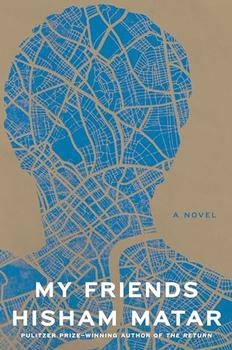Summary | Excerpt | Reviews | Beyond the Book | Read-Alikes | Genres & Themes | Author Bio

This article relates to Barbara the Slut and Other People
In an interview with The Globe and Mail in 2009, David Wroblewski, author of The Story of Edgar Sawtelle, said: "I thought that 'dog stories' had been juvenilized over the course of the 20th century, and that was wrong."
 Like Lauren Holmes, whose short story "My Humans" - in the collection Barbara the Slut and Other People - charts the breakdown of a relationship through the eyes of a dog, Wroblewski is an author prepared to put the voice of an animal in an adult story, stepping away from the anthropomorphic stomping ground of many famous children's stories and novels. In The Story of Edgar Sawtelle, a novel that Wroblewski told BookBrowse, "ponders the relationship between people and dogs", Almondine, Edgar Sawtelle's dog, is given her own voice. This is a serious novel, a novel in which "Shakespearean drama" is "recast in modern terms."
Like Lauren Holmes, whose short story "My Humans" - in the collection Barbara the Slut and Other People - charts the breakdown of a relationship through the eyes of a dog, Wroblewski is an author prepared to put the voice of an animal in an adult story, stepping away from the anthropomorphic stomping ground of many famous children's stories and novels. In The Story of Edgar Sawtelle, a novel that Wroblewski told BookBrowse, "ponders the relationship between people and dogs", Almondine, Edgar Sawtelle's dog, is given her own voice. This is a serious novel, a novel in which "Shakespearean drama" is "recast in modern terms."
Holmes and Wroblewski are not alone in using a canine point of view in serious adult fiction. The Art of Racing in the Rain by Garth Stein, for example, is Enzo's story, the story of an aging dog whose love for and loyalty to his racing driver owner, Danny Swift, translates into a philosophical and at times heart-wrenching tale. Enzo acknowledges his limits as a narrator: "I won't tell you all the details because I don't know them," he says. "I wasn't there because I'm a dog, and dogs are not allowed in court." But Enzo makes up for any perceived lack of knowledge with his calm wisdom. "The race is long," he tells us. "It is better to drive within oneself and finish the race behind the others than it is to drive too hard and crash."
 Paul Auster is another highly successful novelist who has written a novel with a canine narrator. In Timbuktu, a homeless poet, Willy Christmas, has been living on the streets for four years. The story of his last days are told by his straggly dog, Mr. Bones, whose innocent perspective sheds a sympathetic light on a man living far outside the American dream.
Paul Auster is another highly successful novelist who has written a novel with a canine narrator. In Timbuktu, a homeless poet, Willy Christmas, has been living on the streets for four years. The story of his last days are told by his straggly dog, Mr. Bones, whose innocent perspective sheds a sympathetic light on a man living far outside the American dream.
Another dog lover and famous novelist was Virginia Woolf. Although her novel Flush, a biography with both fiction and nonfiction elements, is told in the third person, it is very much a story told from a dog's point of view, and concerns the love story of his mistress. That the person of interest was Elizabeth Barrett Browning and her then lover (later, husband), Robert Browning, adds a level of literary interest to this canine critique of city life in Victorian London.
But it is not only dogs that can take center stage in adult fiction. In The Bees by Laline Paull, Flora 717 is a large and ugly worker bee, tasked with disposing of the bodies of dead bees and keeping the hive clean. Away from the world of the hive, there is Three Bags Full by Leonie Swann. With its cast of sheep, instead of people, Swann's ovine murder mystery novel is witty and entertaining. Miss Maple, "quite possibly the cleverest sheep in the whole world," is ably assisted by Othello, "the only black sheep in the flock" and other memorable ewes, rams and lambs as she sets out to discover who has murdered their shepherd, George.
The last word on animals in stories for adults however, is perhaps owed to Franz Kafka, famous for turning his main character into an insect, as in the novella Metamorphosis, but also someone with a little known penchant for writing short stories with a non-human point of view. In "A Report to an Academy," he gives us an ape that explains how he learned to be human. In "Josephine the Singer," Kafka creates a world of mice. "The Burrow" is an unfinished short story about a mole-like creature, and his "Investigations of a Dog" needs no further explanation.
Filed under Reading Lists
![]() This "beyond the book article" relates to Barbara the Slut and Other People. It originally ran in August 2015 and has been updated for the
August 2016 paperback edition.
Go to magazine.
This "beyond the book article" relates to Barbara the Slut and Other People. It originally ran in August 2015 and has been updated for the
August 2016 paperback edition.
Go to magazine.




The low brow and the high brow
Click Here to find out who said this, as well as discovering other famous literary quotes!
Your guide toexceptional books
BookBrowse seeks out and recommends the best in contemporary fiction and nonfiction—books that not only engage and entertain but also deepen our understanding of ourselves and the world around us.